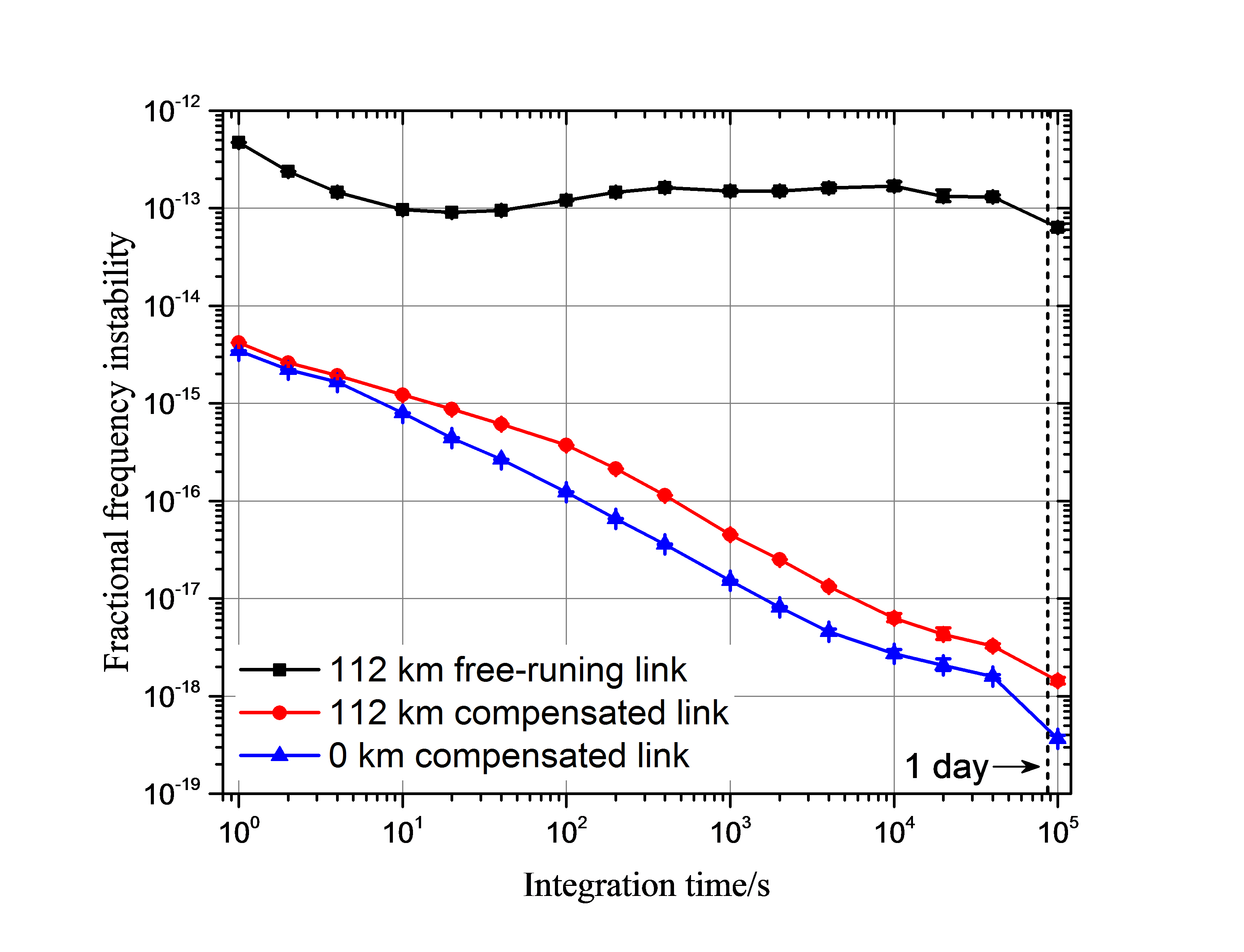A research team led by Prof. ZHANG Shougang from the National Time Service Center (NTSC), the Chinese Academy of Sciences (CAS) designed an improved fiber-based microwave frequency transfer scheme with electronic phase compensation, deepened the study of fiber-based microwave frequency transfer.
Compared with the traditional methods for frequency transfer over satellite links, frequency transfer based on optical fiber has the advantages of low loss, high reliability and active phase stabilization. It is the most accurate frequency transmission method at present.
Ultra-stable frequency transfer is essential in many fields of fundamental and applied science, such as time and frequency metrology, fundamental physics, particle accelerators, and astrophysics, said Prof. ZHANG.
Researchers designed a novel electronic phase compensation system to suppress the influence of the backscattering and parasitic reflections. They demonstrated an ultra-stable microwave frequency transfer over 112-km urban fiber link with a frequency transfer instability of 4.2×10-15 at 1 s integration time and 1.6×10-18 at one day. In addition, this research realized a cascaded system for microwave frequency transfer over 300-km fiber link.
The results show that NTSC has fully mastered the key technology of fiber-based microwave frequency transfer, added Prof. ZHANG.
The improved scheme of fiber-based microwave frequency transfer has authorized by China invention patent---Microwave Frequency Transfer System and Method Based on Frequency Conversion Compensation (Patent Grant Number: ZL201711216363.9).
Part of the research results have published in Chin. Phys. B as the title Microwave Frequency Transfer over a 112-km Urban Fiber Link Based on Electronic Phase Compensation (vol. 29, No. 6, pp. 064209(1-5), 2020) and in Remote Sensing as the title Cascaded Microwave Frequency Transfer over 300-km Fiber Link with Instability at the 10-18 Level (vol. 13, No. 11, pp. 2182(1-13), 2021).

Figure 1 Schematic diagram of fiber-based transfer system principle.(Image by NTSC)

Figure 2 Frequency transfer instability of 112-km urban fiber link. (Image by NTSC)

Figure 3 Frequency transfer instability of 300-km cascaded compensated link. (Image by NTSC)
 Print
Print